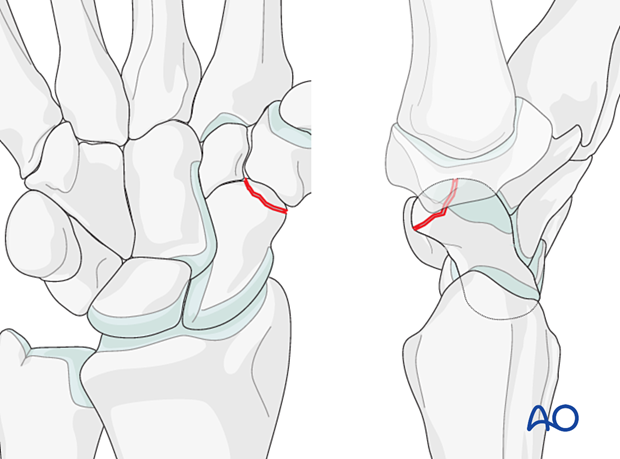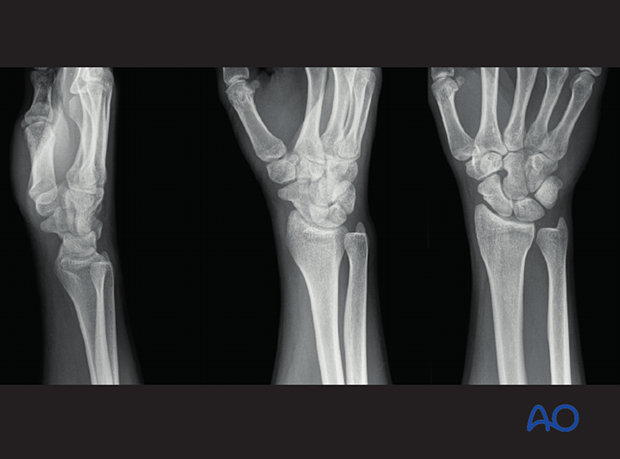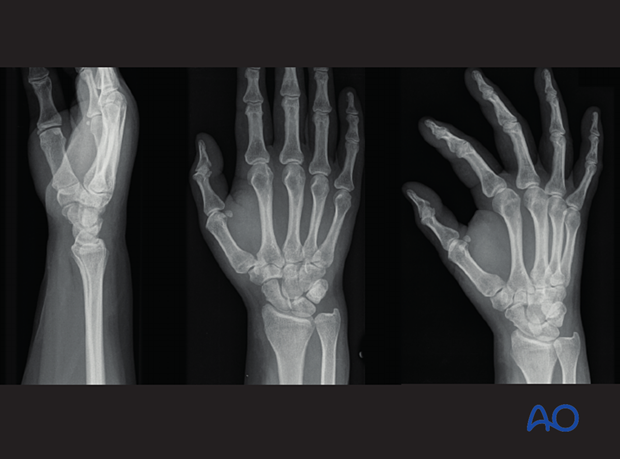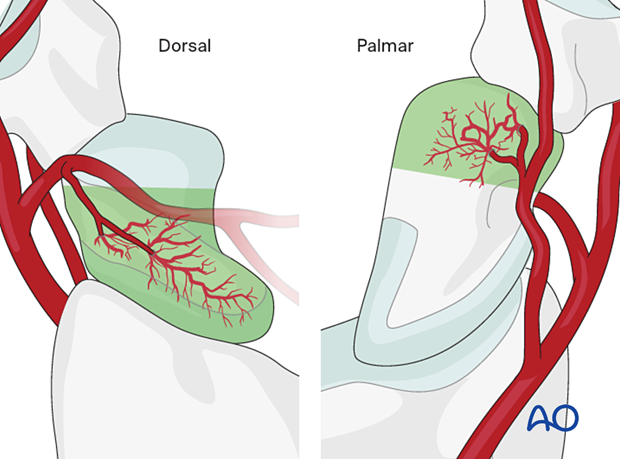Scaphoid tubercle fracture
Definition
Tubercle fractures (also called tuberosity avulsions) of the scaphoid are intraarticular and part of the distal pole. These avulsion fractures are classified by the AO/OTA as 72A.
Besides the AO/OTA, the Herbert classification is most often used to describe scaphoid fractures.

Characteristics
Scaphoid fractures are the most common carpal fractures. Debate continues about the management of these fractures. Questions remain about several issues including scaphoid vascularity, clinical and radiological diagnosis, and treatment options.
Imaging
Lateral, oblique, and AP x-rays of a scaphoid tubercle fracture
Conventional x-rays do not always show the fracture.
A CT scan may be helpful to confirm the diagnosis and show the magnitude of any displacement.

Lateral, AP, and oblique x-rays of another case with a scaphoid tubercle fracture

Pitfall: isolated vs complex carpal injuries
Vascularity
The blood supply of the scaphoid is derived from two sources.
The primary source is a group of vessels entering the dorsal surface of the distal pole. This is the most significant contribution to the vascularity of the scaphoid. For this reason, the proximal pole relies on a retrograde blood flow.
The second group of vessels enters the palmar aspect of the distal pole. These vessels contribute to a lesser degree to the vascularity of the distal third of the scaphoid.














